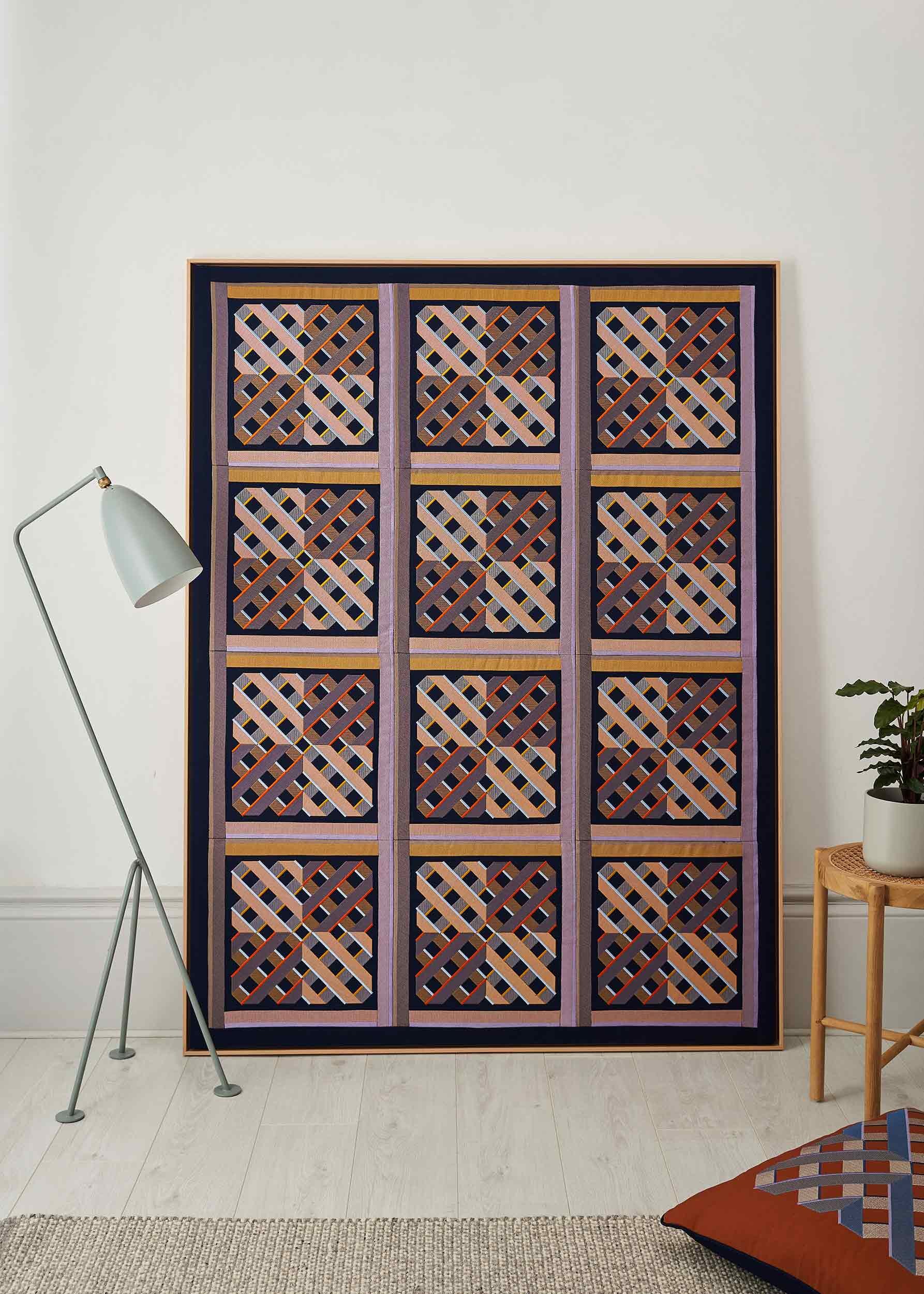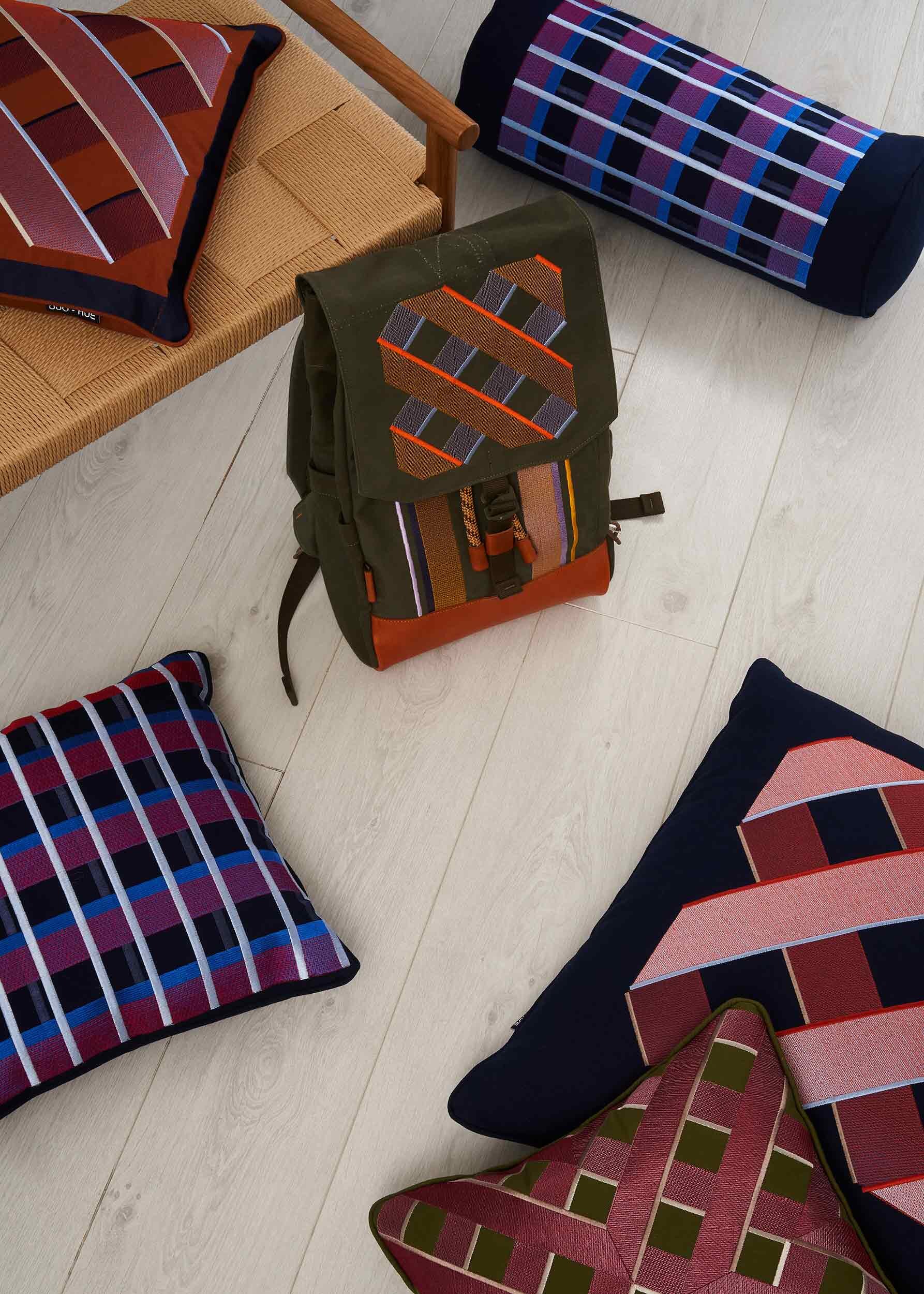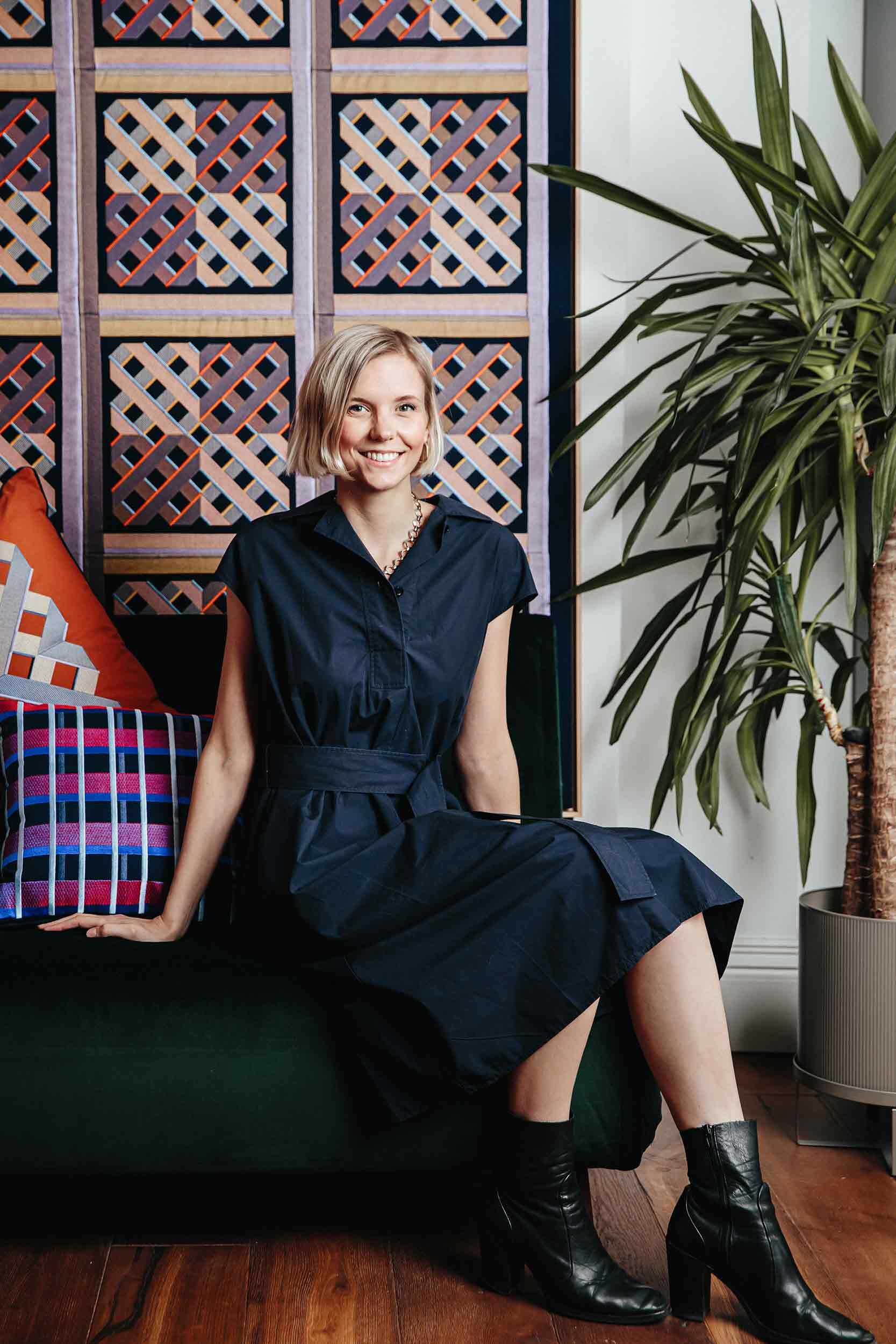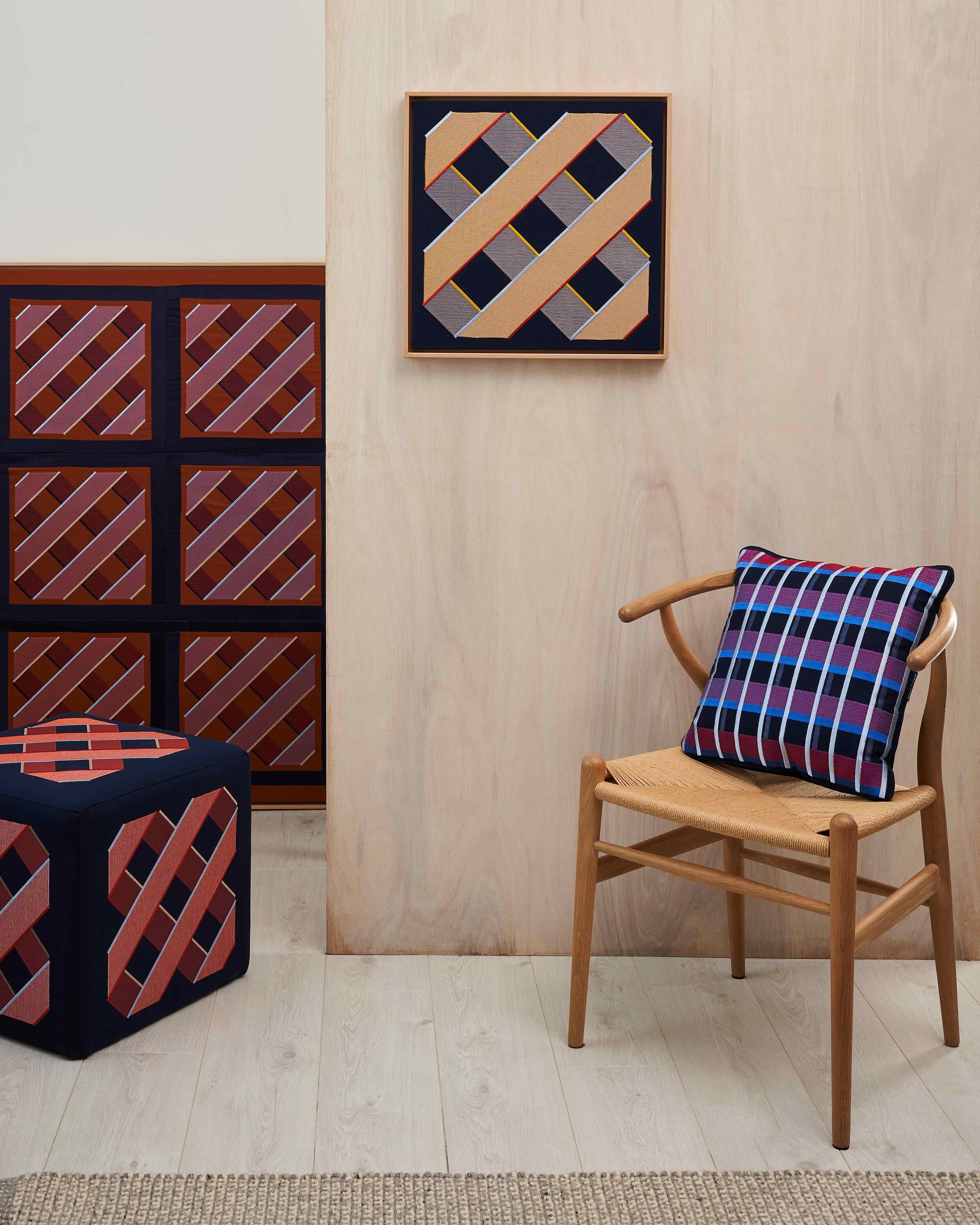Q&A with Amelia Ayerst, founder of DUO-HUE
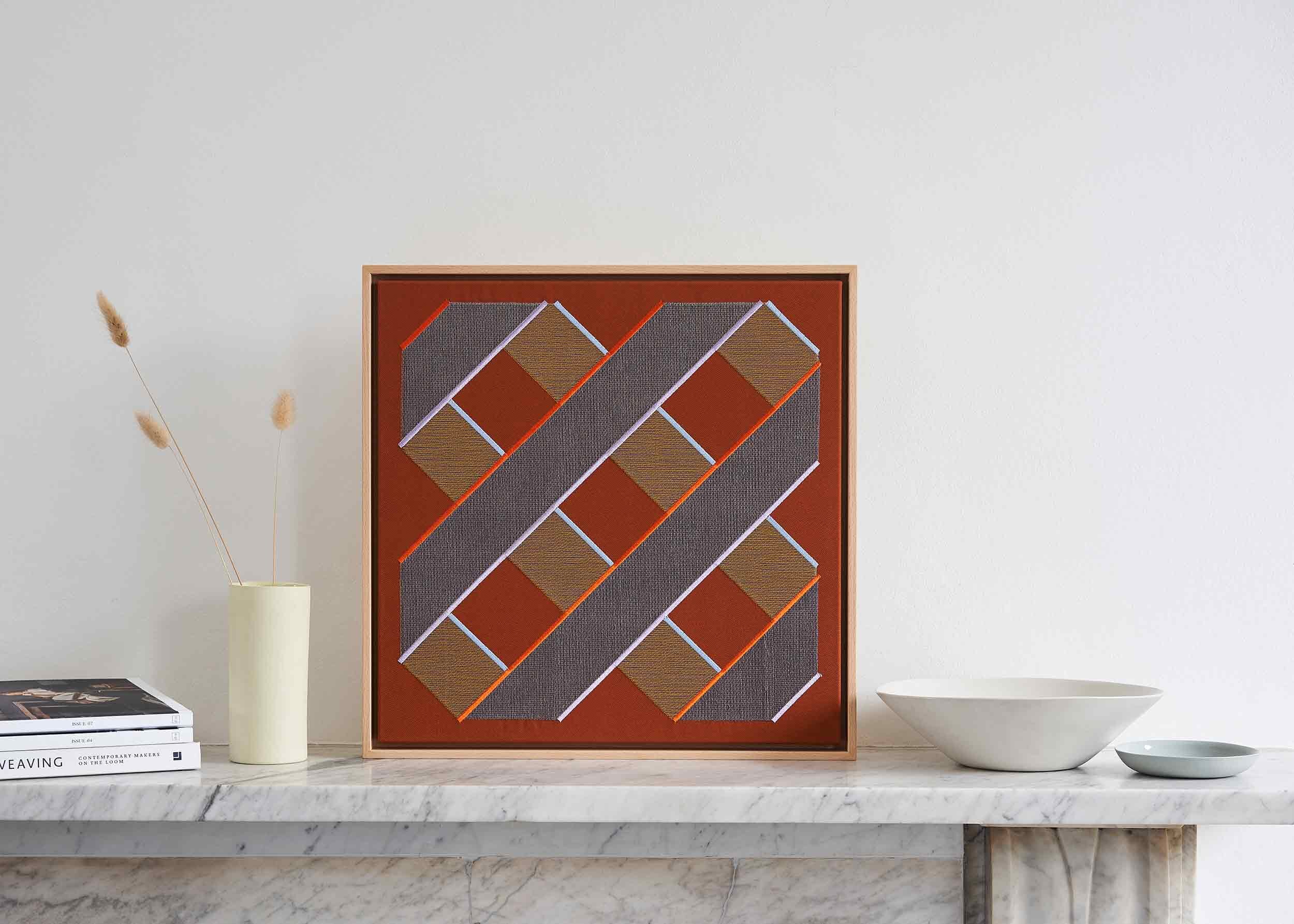
Developed by Amelia Ayerst at the Royal College of Art, DUO-HUE is a unique digital embroidery stitch that integrates craft and technology. With DUO-HUE, complementary colourways and differing stitch densities are combined to create a colour-morphing effect as the product moves. Amelia is fascinated with colour, particularly its use in creating colour illusions in her designs.
DUO-HUE by Amelia Ayerst collaborates with like-minded craftspeople and brands, working on placement embroidery design for the home and lifestyle sectors. All products are made, designed, and embroidered in Britain. Moreover, collaborations with interior designers on bespoke projects will be an important component of DUO-HUE’s business.
You describe DUO-HUE as a unique digital embroidery stitch that creates a colour-morphing effect. For the non-expert, what does this actually mean?
I created the DUO-HUE textile while I was at the Royal College of Art (RCA). My aim was to design a material that changes colour as it moves. To produce the illusion of colours and movement, I applied a unique multilayered embroidery technique.
Colour is a big part of your work—what is your relationship with colour?
I have always been fascinated with colour. Whilst studying at RCA, I focused on the nature of colour and how to create colour illusions through my work. I am interested in how colour communicates with people—how it can transport and transform our thoughts and feelings. My first job after leaving RCA was working with Dyson on its electric car project: I was a CMF designer (Colour, Material, and Finish).
My first collection for DUO-HUE was very much influenced by my travels around India—I visited just before the first national lockdown. I was inspired by the country’s vast array of colour and movement, and I wanted to create designs that would reflect the excitement of colour when applied to home and lifestyle products.
You have collaborated with Francli Craftwear on a limited series of rucksacks. What do you look for in a collaborative relationship?
I’m extremely proud of the collaboration with Francli and how this turned out. I have a number of new collaborations in the pipeline (for example, working with furniture designer Tom Collison on a number of bespoke, handcrafted wooden benches that incorporate the DUO-HUE textile). In a collaborative relationship, I look for like-minded craftspeople and brands, working across the home and lifestyle sectors.
While studying at RCA, I developed some running shoes using DUO-HUE. It’s an area that fascinates me and one I’d like to explore further. I am also collaborating with interior designers to incorporate DUO-HUE into interior design projects. It’s becoming an important part of my business.
Prior to launching DUO-HUE, you worked closely with James Dyson on the Dyson electric car project. How did that experience shape your way of thinking about craft?
Working as part of the close-knit team that developed the Dyson electric car was a wonderful experience and a great opportunity. James Dyson was closely involved with the project and is an inspirational entrepreneur. Although I was working as a CMF designer, the project felt like a start-up business and I learned a great deal about a number of disciplines. I visited many potential suppliers throughout Europe, from state-of-the-art robotic car factories to remote weaving factories and paint-makers.
The experience taught me that ideas are the very beginning of everything, but it's entrepreneurs that turn those ideas into businesses—it’s a creative process. It was exciting to see James Dyson realising his dream of building a British electric car. Although the car did not reach the production stage, I don’t believe any of us involved with the project felt it had failed.
DUO-HUE is a distinct example of the union of craft and technology. How do you see the relationship between craft and technology developing in the coming decade?
DUO-HUE does combine craft and technology, but this isn’t new. Once you move beyond doing something by hand, you are then utilising technology. I spend time and resources looking at how technology can improve, develop, and expand my products. I love the technology involved: it helps me to realise my ideas and to explore colour and textiles.
Importantly, I aim to use technology as a way of serving my creative process and try to avoid it undermining my creative ambitions. I am predominantly a bespoke textile designer—I do not produce huge volumes of throwaway products. Rather, I work to produce unique, beautiful, long-lasting, and collectible home and lifestyle products.
In a few of my collaborations, I’m focused on making use of technology with embroidery in order to breathe new life into old materials. In the collaboration with Francli, we used old army bags and climbing rope to create one of a kind rucksacks. It’s an area I find fascinating and want to explore further with other designers and makers.
What are your aspirations for DUO-HUE as a brand?
Notwithstanding the challenges of starting a business during a pandemic, I’m confident that DUO-HUE by Amelia Ayerst will develop and grow as a brand. In the next few years, I want to build collaborations with new and existing home and lifestyle brands. I would also like to develop a team of colour enthusiasts around me, where we can build on our creative use of colour to transform interiors and products. Moreover, I see collaborations with interior designers on bespoke projects as an important component of DUO-HUE. My experience with CMF can help interior designers to realise their creative visions.


